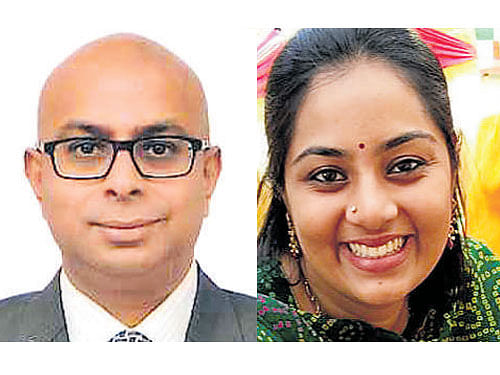
The Centre and the Supreme Court have over the last few months made certain grand gestures, gestures that bear scant resemblance to each other but the target audience and the aim are identical.
They hope to make the welfare of the students writing undergraduate medical entrance exams paramount but have diametrically opposite ways to ensure this laudable goal.
The apex court has attempted to achieve this goal by making the National Eligibility-cum-Entrance Test (NEET) the ultimate exam for undergraduate medical courses and the Centre has striven to achieve the same result by postponing NEET by another year. Which method is most apposite is yet to be seen and in the tussle between these two giants, it is the students who suffer.
The apex court order has disrupted the existing system of state-level entrance exams (for state aided institutions) as well as those conducted by unaided private medical colleges. This is seen to be in direct contravention to the earlier order passed by the apex court in Christian Medical College, Vellore, vs Union of India wherein it had stated that NEET was unconstitutional and could not be abided with. A majority believe that the latest judgment passed by the Supreme Court is a dramatic 180 degree turn from its earlier vehement opposition to NEET. The truth is more prosaic and simultaneously more complicated.
Technically, the bench headed by Justice Dave has not overruled the judgment passed in CMC, it has merely passed an order in a writ petition which undermines the same–ergo(the previous verdict), the apex court has not “changed its stance”. However, something much more dangerous and subversive has come to pass–a three-judge bench has in effect side stepped the judgment passed by an 11-judge bench (TMA Pai) which was then clarified by a seven-judge bench in Inamdar. The checks and balances of the legal system have been by-passed and the past has been erased with the masses becoming none the wiser. The butterfly effect of this judgment is terrifying in its enormity and may well be a sign of a different morrow.
A careful reading of the 2014 judgment passed in CMC will reveal that this judgment was expected and that it was merely a matter of time before it would come to pass. In CMC, a minority/dissenting opinion was recorded by Justice Dave who had disagreed with his brother judges on the unconstitutionality of the concept of a nationwide common entrance exam for medical courses. Justice Dave, in his dissenting opinion, dealt with the same factual matrix as his brother judges and even took a similar stance on the eight issues that were framed therein, but viewed the restriction imposed by NEET as necessary.
Changing rulings
Time and again, judges who wrote dissenting opinions have reversed the majority opinion once they were in a position to do so. Justice Benjamin Cardozo unforgettably said: “The dissenter speaks to the future, and his voice is pitched to a key that will carry through the years”. This perfectly sums up what has been a self-fulfilling prophecy in the present matter. Justice Dave viewed NEET as an end to the evils of private institutions taking capitation fees and undeserving students becoming doctors and dentists. Once he was in a position to propagate his views, he did so.
In 2014, the Supreme Court followed the law laid down in the TMA Pai judgment and the Inamdar judgment and held that NEET was unconstitutional. The majority decision held that private and unaided minority medical institutions had a fundamental right to decide their admission process as per Articles 19(1)(g) and Article 30, respectively. It held that as long as the admission process was fair, transparent and there was no exploitation of fees, it could not violate the rights guaranteed to these institutions.
In 2016, the case (Sankalp Charitable Trust & Anr vs Union of India & Ors) before the apex court did not differ significantly from the case before it in 2014 and no proof was submitted of the private and unaided and minority institutions violating the principles laid down in Inamdar. Worryingly, in Sankalp, none of the directly affected persons were made parties–namely the states and private colleges. Despite no new grounds being put forth to make NEET constitutional, the exam was deemed valid and the rights of private medical colleges have been indelibly changed.
The Supreme Court in its latest judgment portrayed NEET to be a panacea, but NEET is, in reality, a multi-faceted weapon. In the current case, this powerful weapon has neither been launched with care nor guided with deft aim. The judgment grossly prejudices the right of unaided minority institutions and private institutions. This order has been passed in April, well into entrance exam season, and certain states and private medical colleges have already conducted their entrance exams.
The root of the problem lies in the fact that NEET is not the great equaliser. In fact, NEET is seen by many to be a pro-north and pro-urban examination as the examination is conducted by the CBSE and the syllabus for the exam draws heavily from the CBSE syllabus. This spells disaster for the students who have not studied in CBSE schools- a common phenomenon in the southern, eastern and western states. Further, it is common knowledge that nationwide common entrances such as AIPMT are known to be corrupt. Crucially, the main challenge to NEET is still pending before the apex court, but this fact has been ignored.
(The writers are advocates at the Supreme Court)